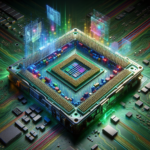Understanding the Use of CPUs in Network Security Appliances

Understanding the Use of CPUs in Network Security Appliances
In the ever-evolving landscape of cybersecurity, network security appliances play a crucial role in protecting organizational assets from a myriad of threats. At the heart of these appliances lies the Central Processing Unit (CPU), a critical component that drives their performance and effectiveness. This article delves into the significance of CPUs in network security appliances, exploring their functions, types, and the factors influencing their selection.
The Role of CPUs in Network Security Appliances
Core Functions of CPUs in Network Security Appliances
CPUs in network security appliances are responsible for executing a variety of tasks that ensure the security and integrity of network traffic. These tasks include:
- Packet Inspection: CPUs analyze incoming and outgoing packets to detect malicious content, ensuring that only legitimate traffic passes through the network.
- Encryption and Decryption: CPUs handle the encryption and decryption of data to protect sensitive information from unauthorized access.
- Intrusion Detection and Prevention: CPUs run algorithms to identify and mitigate potential threats, such as malware, viruses, and unauthorized access attempts.
- Traffic Management: CPUs manage network traffic to ensure optimal performance and prevent bottlenecks.
- Policy Enforcement: CPUs enforce security policies and rules defined by network administrators to maintain a secure network environment.
Types of CPUs Used in Network Security Appliances
Network security appliances utilize different types of CPUs, each with its own strengths and weaknesses. The most common types include:
- General-Purpose CPUs: These CPUs, such as those from Intel and AMD, are versatile and capable of handling a wide range of tasks. They are commonly used in network security appliances due to their flexibility and performance.
- Network Processors (NPUs): NPUs are specialized CPUs designed specifically for network-related tasks. They offer high performance for packet processing and are optimized for handling large volumes of network traffic.
- Application-Specific Integrated Circuits (ASICs): ASICs are custom-designed chips tailored for specific tasks. In network security appliances, they provide high-speed processing for tasks such as encryption and packet inspection.
- Field-Programmable Gate Arrays (FPGAs): FPGAs are reconfigurable chips that can be programmed to perform specific tasks. They offer flexibility and high performance, making them suitable for network security applications.
Factors Influencing CPU Selection in Network Security Appliances
Performance Requirements
The performance requirements of a network security appliance are a critical factor in CPU selection. High-performance CPUs are necessary for appliances that handle large volumes of traffic or require real-time processing. Factors to consider include:
- Throughput: The amount of data the appliance can process per second.
- Latency: The time it takes for the appliance to process and forward packets.
- Concurrent Connections: The number of simultaneous connections the appliance can handle.
Power Consumption
Power consumption is another important consideration, especially for appliances deployed in environments with limited power resources. CPUs with lower power consumption can reduce operational costs and improve energy efficiency.
Scalability
Scalability is essential for network security appliances that need to grow with the organization. CPUs that support multi-core processing and parallelism can enhance scalability, allowing the appliance to handle increasing traffic loads.
Cost
The cost of the CPU is a significant factor, particularly for organizations with budget constraints. While high-performance CPUs may offer superior capabilities, they also come with a higher price tag. Balancing performance and cost is crucial for selecting the right CPU.
Challenges and Considerations in CPU Utilization
Balancing Performance and Security
One of the primary challenges in utilizing CPUs in network security appliances is balancing performance and security. High-performance CPUs can process large volumes of traffic quickly, but they may also introduce vulnerabilities if not properly secured. Ensuring that CPUs are protected from threats such as side-channel attacks is essential.
Heat Dissipation
CPUs generate heat during operation, and excessive heat can lead to performance degradation or hardware failure. Effective cooling solutions, such as heat sinks and fans, are necessary to maintain optimal CPU performance and longevity.
Firmware and Software Updates
Regular firmware and software updates are crucial for maintaining the security and performance of CPUs in network security appliances. These updates address vulnerabilities, improve functionality, and ensure compatibility with the latest security protocols.
Future Trends in CPU Utilization for Network Security
Artificial Intelligence and Machine Learning
The integration of artificial intelligence (AI) and machine learning (ML) in network security appliances is a growing trend. CPUs with AI and ML capabilities can enhance threat detection and response by analyzing patterns and identifying anomalies in real-time.
Edge Computing
Edge computing involves processing data closer to the source, reducing latency and improving performance. CPUs designed for edge computing can enhance the capabilities of network security appliances by enabling faster threat detection and response.
Quantum Computing
Quantum computing has the potential to revolutionize network security by providing unprecedented processing power. While still in its early stages, quantum CPUs could offer advanced encryption and decryption capabilities, significantly enhancing network security.
FAQ
What is the primary function of a CPU in a network security appliance?
The primary function of a CPU in a network security appliance is to execute tasks such as packet inspection, encryption and decryption, intrusion detection and prevention, traffic management, and policy enforcement to ensure the security and integrity of network traffic.
What types of CPUs are commonly used in network security appliances?
Common types of CPUs used in network security appliances include general-purpose CPUs (e.g., Intel, AMD), network processors (NPUs), application-specific integrated circuits (ASICs), and field-programmable gate arrays (FPGAs).
How do performance requirements influence CPU selection in network security appliances?
Performance requirements influence CPU selection based on factors such as throughput, latency, and concurrent connections. High-performance CPUs are necessary for appliances that handle large volumes of traffic or require real-time processing.
Why is power consumption an important consideration for CPU selection?
Power consumption is important because it affects operational costs and energy efficiency. CPUs with lower power consumption can reduce electricity bills and are suitable for environments with limited power resources.
What are some challenges in utilizing CPUs in network security appliances?
Challenges include balancing performance and security, managing heat dissipation, and ensuring regular firmware and software updates to address vulnerabilities and improve functionality.
What future trends are expected in CPU utilization for network security?
Future trends include the integration of artificial intelligence and machine learning, the adoption of edge computing, and the potential use of quantum computing to enhance network security capabilities.
Conclusion
CPUs are the backbone of network security appliances, driving their performance and effectiveness in protecting organizational assets. Understanding the various types of CPUs, their functions, and the factors influencing their selection is crucial for optimizing network security. As technology continues to evolve, advancements in AI, edge computing, and quantum computing will further enhance the capabilities of CPUs in network security appliances, ensuring robust protection against emerging threats.




